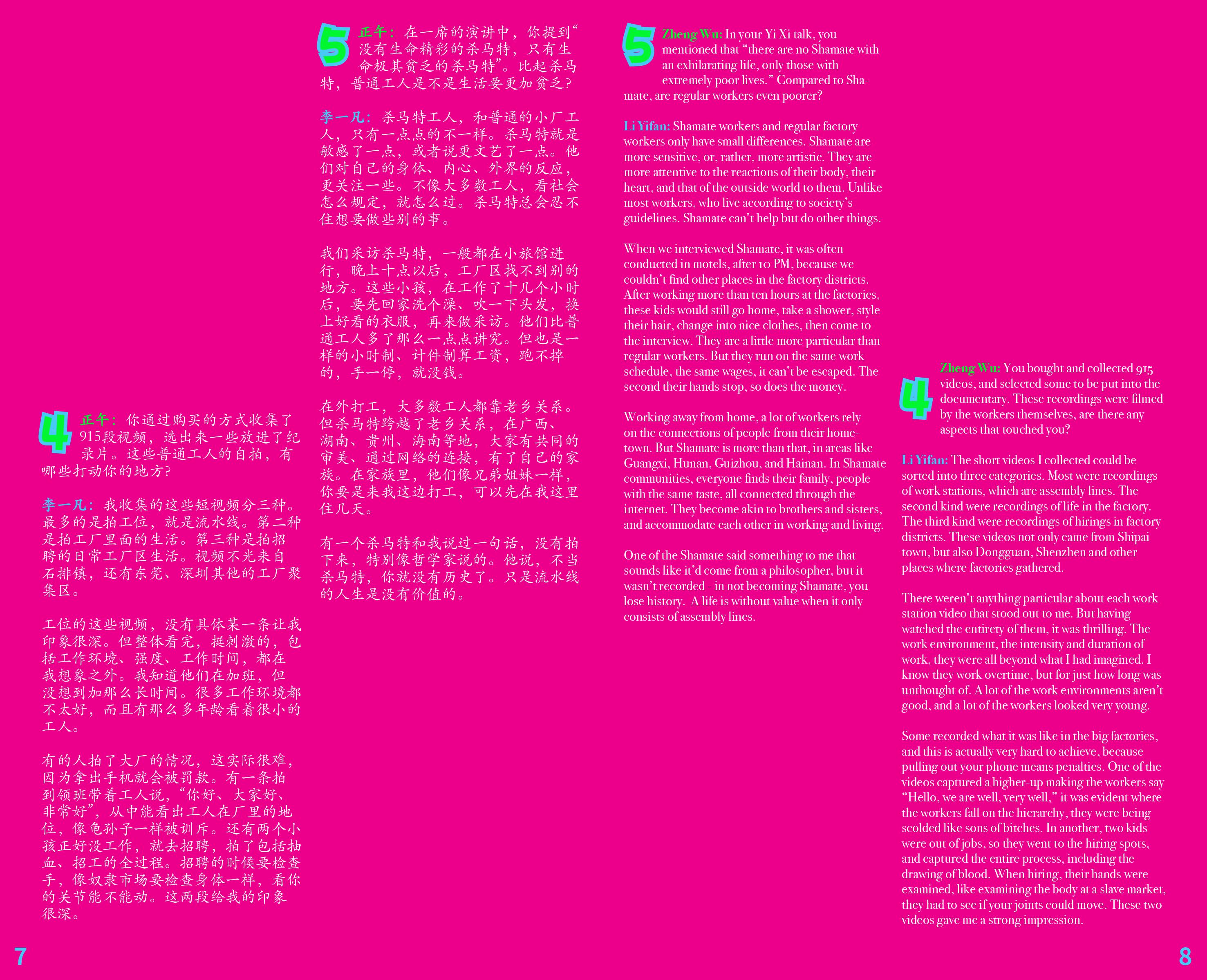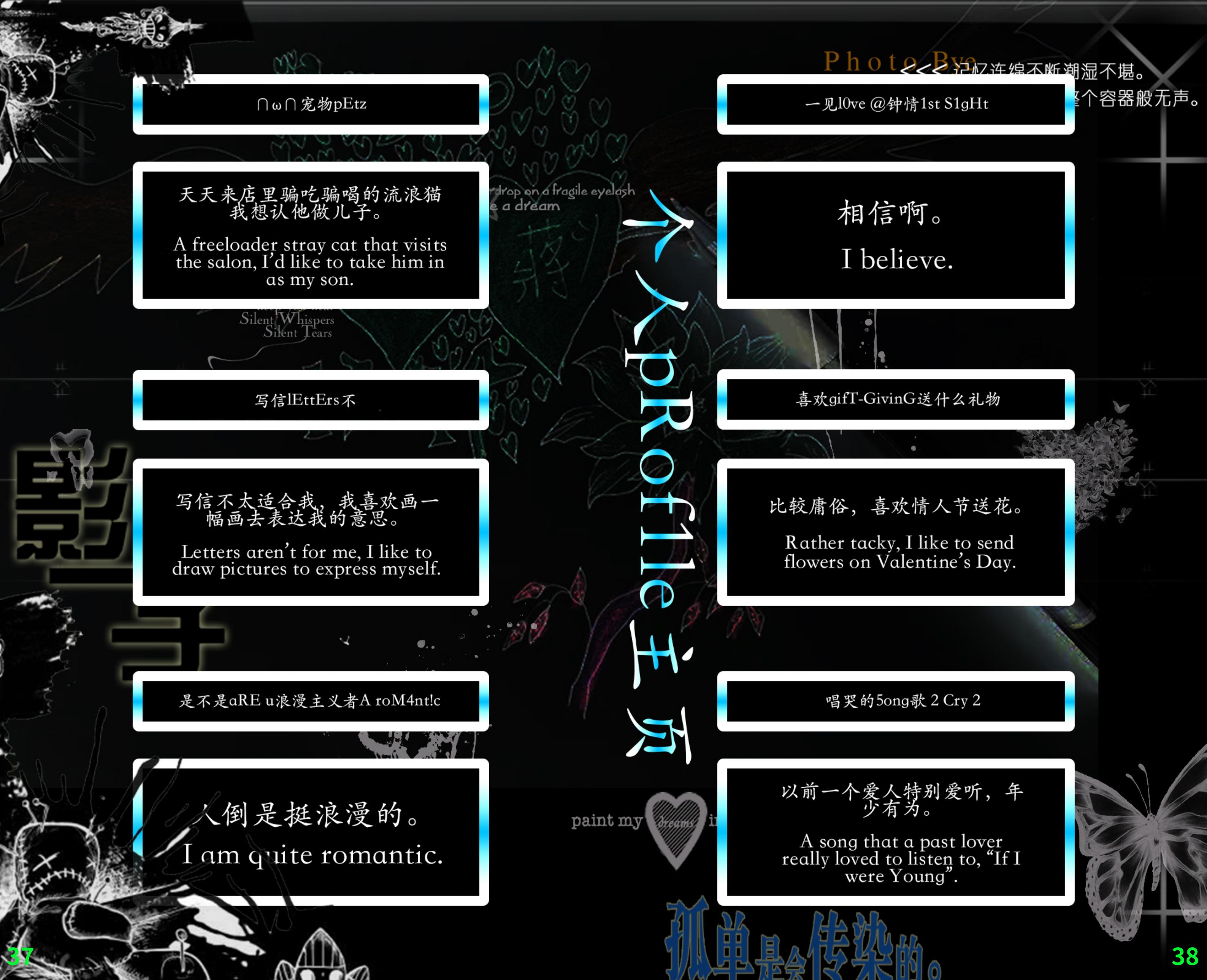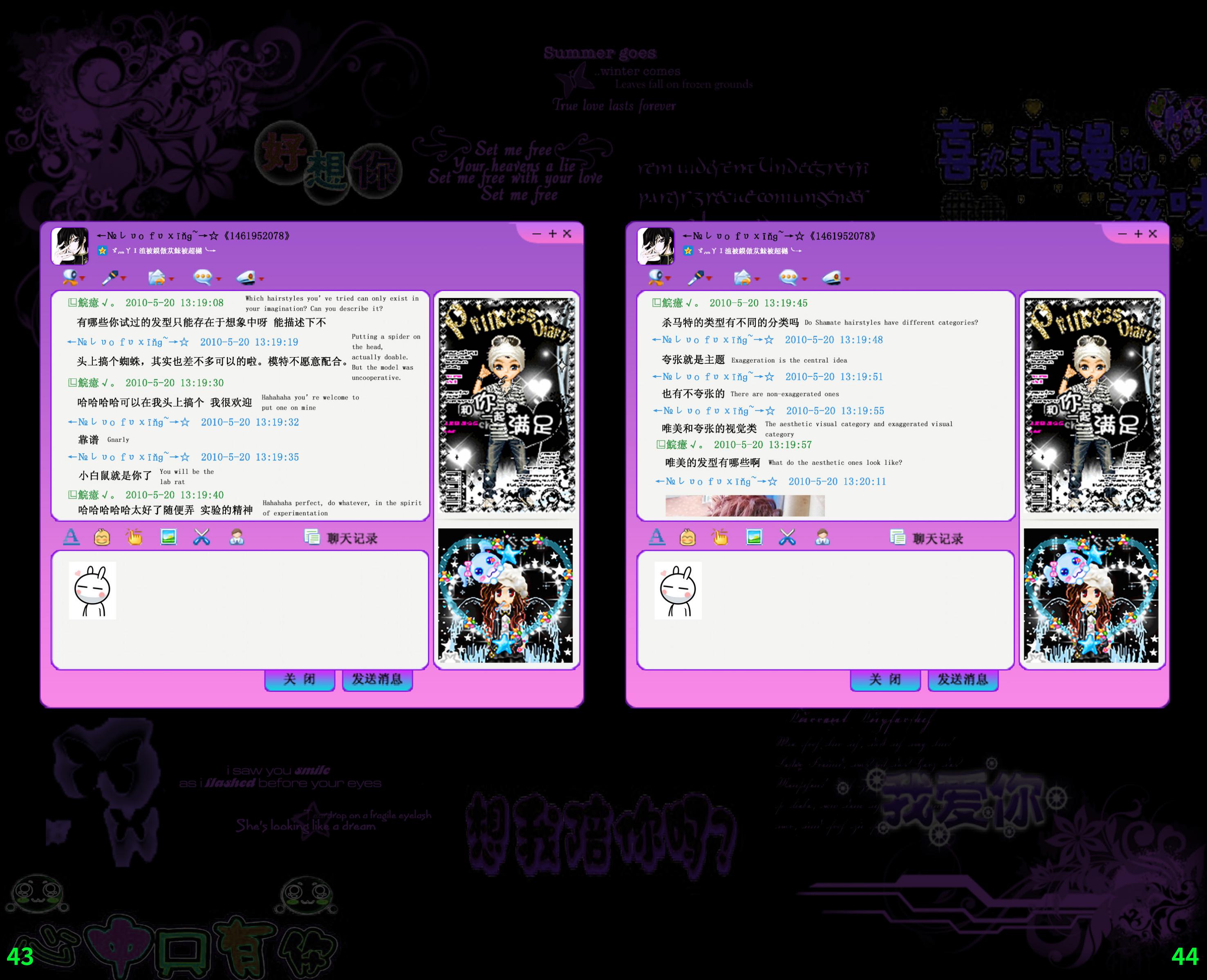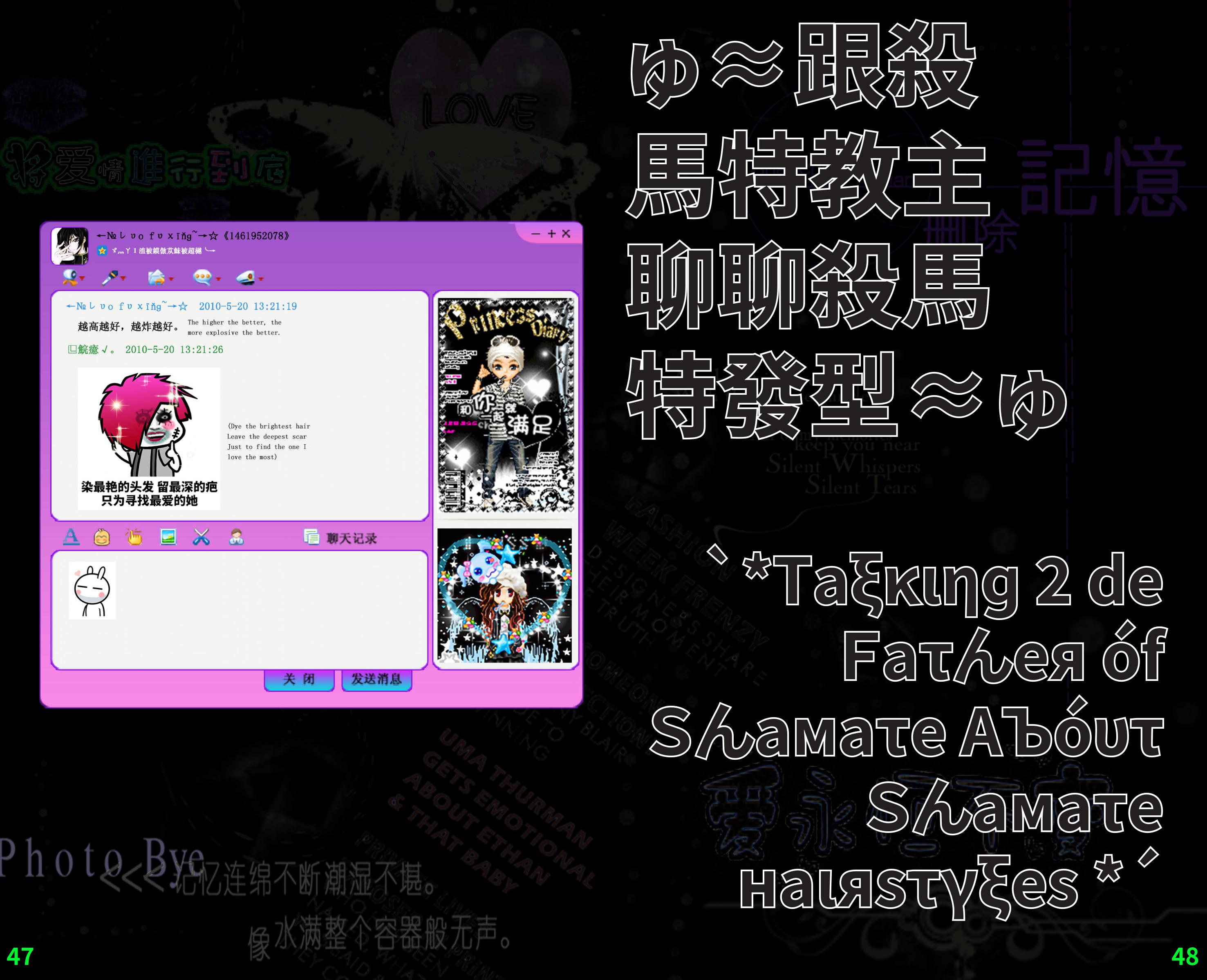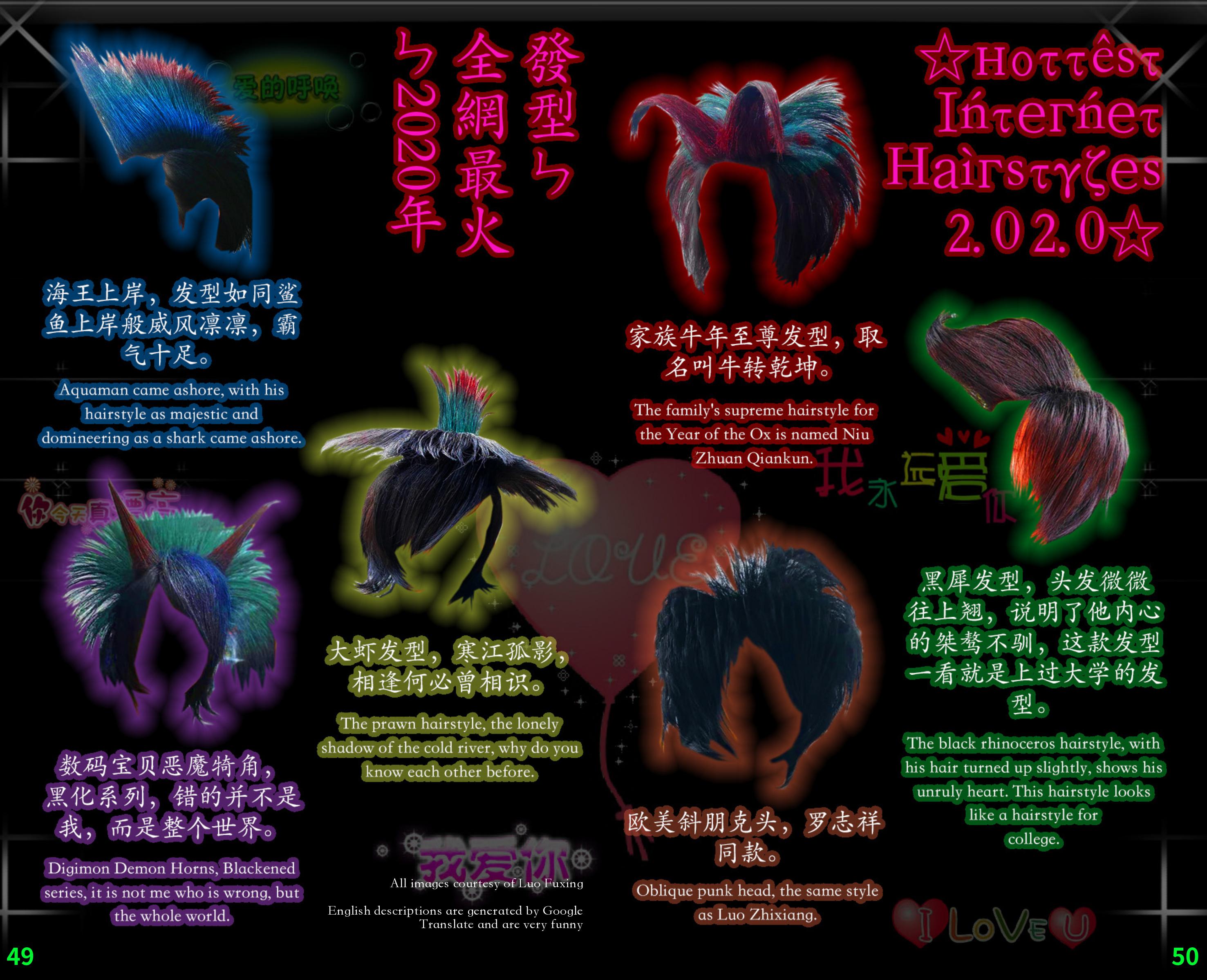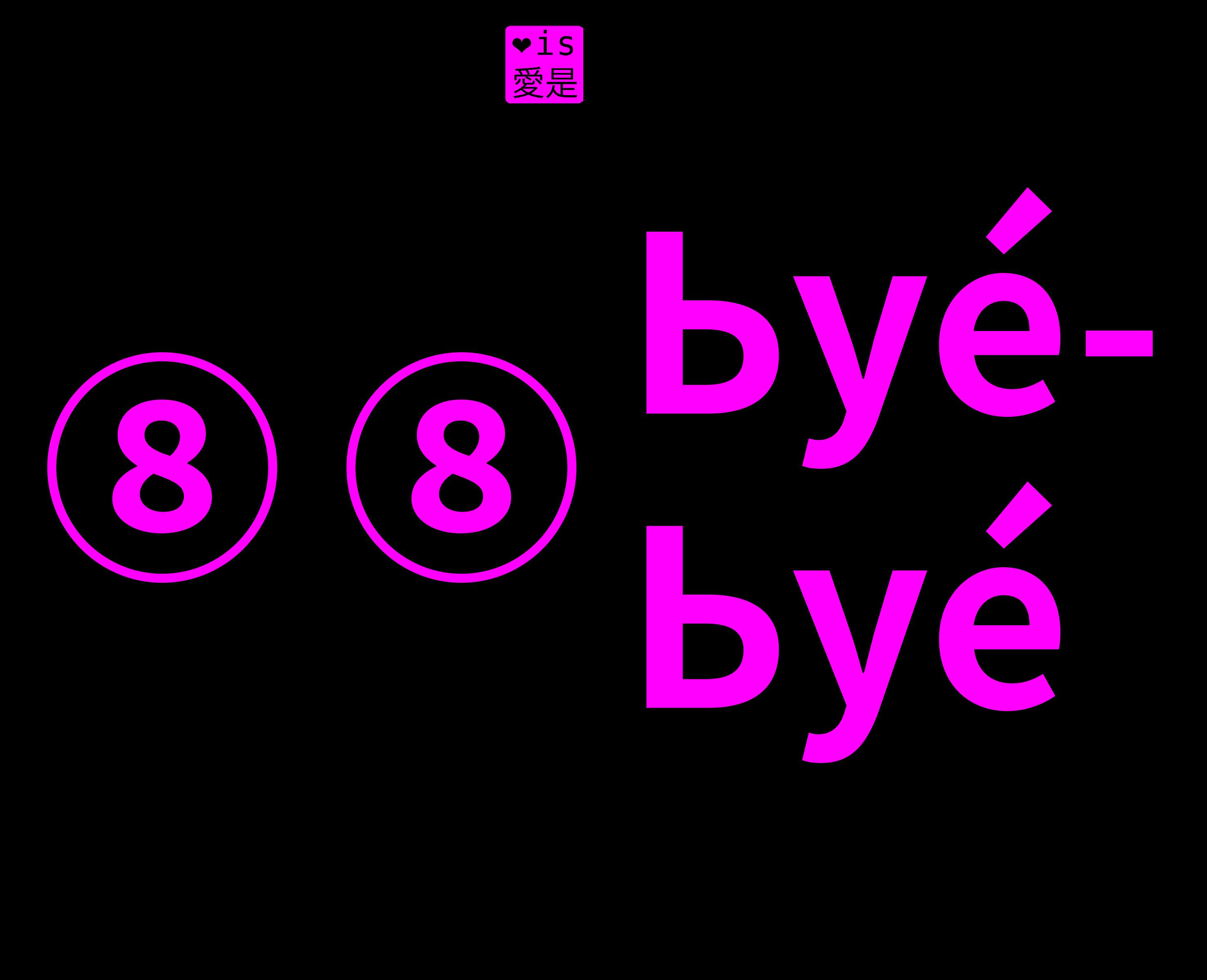杀马特罗曼史 (Shamate Love)
A mock bilingual magazine publication detailing the rise and fall of the early Chinese cyber-subculture “Shamate/杀马特”.
Incorporates pre-existing articles/interviews (Interview with Li Yifan & “Death of a Subculture”) with original design and content (Conversatioins with the Father of Shamate, Luo Fuxing, were conducted by me with him through Wechat).
My desire to pursue this project spurred consequently from my first watching of director Li Yifan’s documentary We Were Smart/杀马特我爱你 (2019). The documentary cut into the many societal and political layers that led to the death of Shamate.It consists of a juggernaut of bought footage shot by both current and ex-Shamate members and interviews with them, an attempt at lending a voice to the community that was once bullied online and offline into oblivion.
Shamate were known for their elaborate style and became hated by the mainstram for it, too. But what was heavily remiss a deacde ago, and still, today, about these flamboyant adolescents, were their similar backgrounds and unanimous desire for acceptance, attention, and warmth. Shamate comprised almost solely of teens from poor, rural areas of China that found it inevitable to enter the factory at a young age as a means of survival. They came to the city alone and lonely; Shamate was their only way of searching for a family, and the Shamate style was their only way of receiving attention, albeit hurtful.
Incorporates pre-existing articles/interviews (Interview with Li Yifan & “Death of a Subculture”) with original design and content (Conversatioins with the Father of Shamate, Luo Fuxing, were conducted by me with him through Wechat).
My desire to pursue this project spurred consequently from my first watching of director Li Yifan’s documentary We Were Smart/杀马特我爱你 (2019). The documentary cut into the many societal and political layers that led to the death of Shamate.It consists of a juggernaut of bought footage shot by both current and ex-Shamate members and interviews with them, an attempt at lending a voice to the community that was once bullied online and offline into oblivion.
Shamate were known for their elaborate style and became hated by the mainstram for it, too. But what was heavily remiss a deacde ago, and still, today, about these flamboyant adolescents, were their similar backgrounds and unanimous desire for acceptance, attention, and warmth. Shamate comprised almost solely of teens from poor, rural areas of China that found it inevitable to enter the factory at a young age as a means of survival. They came to the city alone and lonely; Shamate was their only way of searching for a family, and the Shamate style was their only way of receiving attention, albeit hurtful.
I grew up in the internet era of Shamate, though I was a bit younger. But I remember the circumstances, and the uniform hate they were being shown everywhere. I probably joined in, too;it was considered the norm and the only way to look at them, as monsters that encapsulated the strangest and ugliest of society. Internet abuse escalated into physical abuse in offline spaces and most online Shamate groups and forums were forced to disband. Presently, there are only a couple hundred of Shamate remaining in smaller Chinese cities, from what was once a group upwards of hundreds of thousands of members. They deserve to have their voice amplified and stories heard, even if it only means one more person is willing to listen and reflect.
When I got in contact with Luo Fuxing, he agreed to be interviewed if I buy him dinner then we proceeded to talk about Overlord. He showed me screenshots of his Wechat contacts, they were grouped succinctly and neatly, the press and media personnel group was nearly full and I was grouped into strangers. He often went off on tangents when I asked him questions and we’d joke around a bit, we agreed that if I came to visit, I’d be given the most extravagant Shamate hair, employed with all of mine and his artistic sensibilities. He works at a hair salon in a smaller city and manages a Wechat blog sporadically. People like me often come flocking to him in hopes of becoming privy to some exclusive Shamate history and insight.
To end this extensive ramble, a response from my friend after finishing the magazine:
“I think it’s inspiring to see class frustrations manifested in such a poignant and colorful way, and even crazier that the movement’s birth and death were both facilitated by the digital.”





